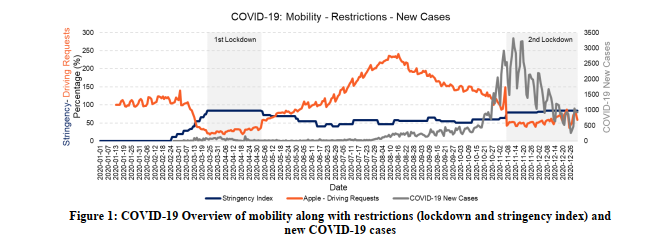
This paper tries to identify and investigate the most significant factors in the entire 2020 that influenced the relationship between the COVID-19 pandemic metrics (i.e., COVID-19 cases, fatalities and reproduction rate) and restrictions (i.e., stringency index and lockdown measures) with driving behaviour. To that aim, naturalistic driving data for a 12-month timeframe were exploited and analyzed. The examined driving behaviour variables were harsh acceleration events and harsh braking events concerning a time period before, during and after the lockdown measures in Greece. The harsh events were extracted using data obtained by a specially developed smartphone application which were transmitted to a back-end telematic platform between 1st of January and 31st of December, 2020. Based on the collected data, XGBoost feature analysis algorithms were deployed in order to obtain the most significant factors. Furthermore, a comparison among the first COVID-19 lockdown (i.e., February to May 2020), the second one (i.e., August to November 2020) and the period without COVID-19 restrictions was drawn. Results revealed the impact of COVID-19 metrics and restrictions on driving behaviour and the indisputable relation with other factors (i.e., distance travelled, mobile use, driving requests, driving during risky hours). Furthermore, the differences and similarities of the harsh events between the two lockdown periods were identified. This paper tries to fill this gap in existing literature concerning a feature analysis for the entire 2020 and including the first and second lockdown restrictions of the COVID-19 pandemic in Greece.
| ID | pc454 |
| Presentation | |
| Full Text | |
| Tags |







